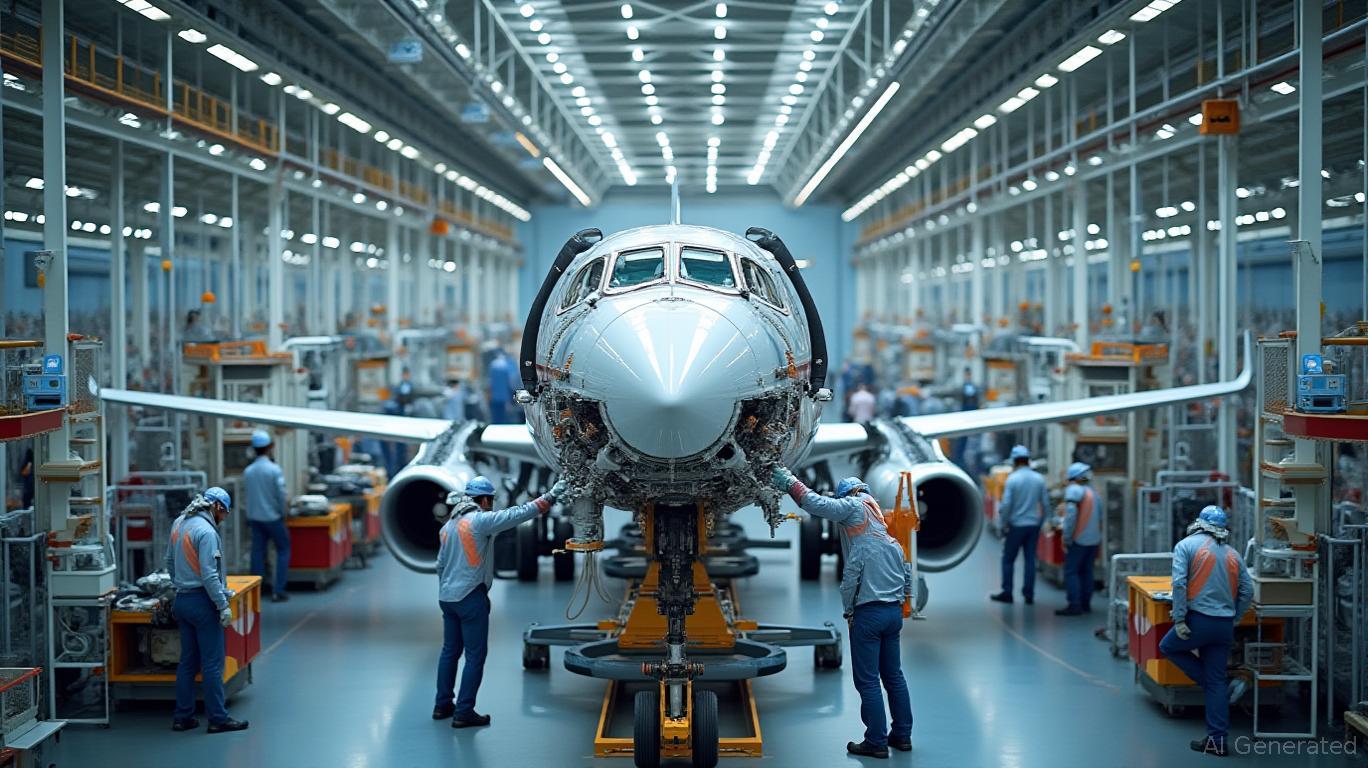Airbus: Navigating Near-Term Storms for Long-Term Growth?
The aviation industry's recovery from pandemic disruptions has been uneven, and Airbus faces its own turbulence. Persistent engine shortages and supply chain bottlenecks threaten its 2025 delivery targets, raising questions about whether current headwinds signal prolonged underperformance or present a buying opportunity for long-term growth. Here's how the company stacks up against risks and opportunities.
The Near-Term Storm: Engine Shortages and Production Bottlenecks
Airbus's 2025 target of 820 deliveries—a 7% increase over 2024—now looks precarious. Q2 2025 has seen deliveries decline, with May's output dropping to 47 aircraft, a 15% year-over-year slide. The primary culprit? LEAP engine shortages from CFM International, which supplies engines for the A320neo. As of May, 17 A320neo aircraft sat engineless in Toulouse, dubbed “gliders,” while production fell to just 39 units in May, down from 46 in March.
The A350 program faces parallel struggles, with production capped at 6/month due to delays from supplier
. The A350F freighter, originally slated for delivery in 2026, now won't arrive until 2027, further delaying revenue streams.
Why It Matters:
- Q2 2025 Deliveries (Jan–May total: 243) are 5% below 2024's pace.
- Cash Flow Woes: Negative free cash flow of €-310 million in Q1 underscores inventory buildup.
- Investor Skepticism: Shares are down 15% YTD, and analysts question whether Airbus can hit its €7.0 billion EBIT Adjusted target.
Long-Term Growth: Betting on the A321neo and A350F
Despite near-term pain, Airbus's backlog of 8,668 aircraft (86.9% narrowbodies) offers a runway for recovery. Two programs could drive long-term resilience:
1. The A321neo: The Workhorse in Demand
The A321neo, the largest member of the A320neo family, is critical to Airbus's growth. With 27 deliveries in May, it's the backbone of narrowbody demand. However, production remains constrained by engines.
Resilience Score:
- Upside: Strong orders from carriers like flyadeal (Saudi Arabia) highlight demand.
- Downside: Production can't exceed ~40/month until engine supply stabilizes. CFM's 2025 target of 1,688 LEAP engines—up 15–20%—may help, but execution risks linger.
2. The A350F Freighter: A Delayed But Lucrative Play
The A350F's postponement to 2027 is a setback, but the freighter market is booming. Airbus's A350-1000 received 10 orders from China Airlines in April, signaling demand for long-haul freight capacity.
Resilience Score:
- Upside: The freighter market is projected to grow at 5.3% CAGR through 2030.
- Downside: Competitors like Boeing's 777X (certification delayed to 2026) and the 787-10 offer alternatives.
Defense and Diversification: A Buffer Against Uncertainty
Airbus's defense segment, which secured €2.6 billion in orders in Q1 2025, offers a hedge against civil aviation volatility. Programs like the A400M transport and drones for military customers could stabilize cash flows while commercial production catches up.
Investment Thesis: Buy the Dip or Wait for Clarity?
Bull Case:
- Supply Chain Stabilization: If CFM's LEAP production ramp-up and Spirit AeroSystems integration (Q3 2025) go smoothly, Airbus could recover to ~50/month A320neo production by year-end.
- Backlog Execution: Deliveries could rebound in 2026, leveraging its robust order book.
Bear Case:
- Tariff Risks: U.S.-China trade disputes continue to disrupt deliveries to Asia.
- Competitor Pressure: Boeing's 2025 delivery rebound to ~570 aircraft (vs. 350 in 2024) could squeeze Airbus's market share.
Final Take: A Hold with a Positive Long-Term Bias
Airbus's shares currently reflect near-term risks but could offer value for patient investors. Key catalysts to watch:
1. June's Production Data: A320neo output above 50/month would be a bullish sign.
2. CFM's Engine Deliveries: A Q3 2025 rebound in LEAP supply could alleviate bottlenecks.
3. A350F Certification: Progress in 2026 would unlock deferred revenue.
For now, hold Airbus shares unless prices dip further. The long-term case hinges on execution—success here could make this a generational growth story.
Investment Advice:
- Aggressive Investors: Buy on dips below €100 (June 2025 price) with a 12–18 month horizon.
- Conservative Investors: Wait for Q3 2025 production clarity before committing.
The skies are still cloudy for Airbus, but the runway to recovery is visible—if supply chains can finally take flight.

Comments
No comments yet